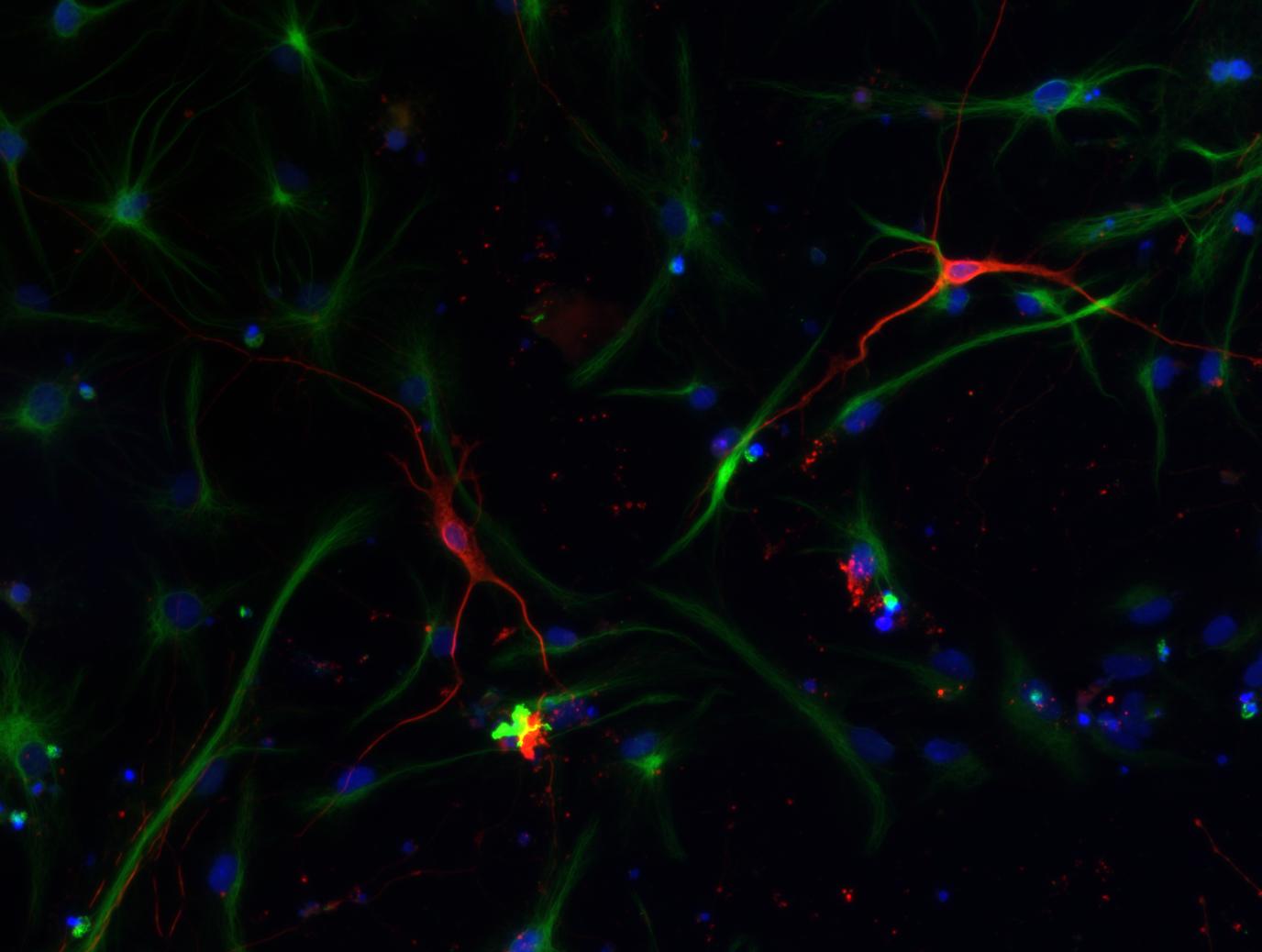
Cultured hippocampal neurons
Cell culture techniques and biological engineering of various organ tissues are essential components for sustainable progress in neuroscience. However, the biological relevance in translational research approaches – and thereby their potential to replace animal experiments – remains widely unknown. By implementing our technical core expertise, we aim at advancing the development of these resources in neuroscience research. Using human cell cultures, we intend to elucidate the pathophysiological mechanisms of yet unexplored neuropsychiatric diseases.
Major aims:
- Humanizing organotypic tissue cultures: Murine tissue cultures that consist of various interacting cell types, are suitable tools for translational research. Notably, similar human tissue cultures models do not exist although a variety of human CNS cell types can be differentiated from induced pluripotent stem cells (iPSCs). We intend to establish structured human tissue cultures that enable the investigation of single cell synaptic connectivity and thereby provide novel insights in patient-oriented personalized synaptic transmission.
- Self-organizing models: Self-organizing 3D-models of the central nervous system (“organoids”) have recently gained considerable interest. Based on their differentiation, complex interacting systems can be generated that mimic different brain regions (“assembloids”). We have the goal to build personalized organoids and assembloids to address specific questions in the pathophysiology of neuropsychiatric disorders.
- Ex vivo inter-organ communication: The performance of our brain relies on internal body conditions, which are regulated by a complex interplay of different organs. To improve the biological relevance of neuroscientific research approaches, it is a major challenge to model inter-organ communication ex vivo. Together with our collaborating partners, we aim at contributing to advances in this field by implementing models for gut-brain, liver-brain and heart-brain axes.
Addressing these points, our vision is to improve the translational relevance of research models in neuroscience. Simultaneously, our technical resources will help us to accelerate 3R (reduce, replace, refine) concepts in animal research.
Key publications:
The Amyloid Precursor Protein Regulates Synaptic Transmission at Medial Perforant Path Synapses. Lenz M, Eichler A, Kruse P, Galanis C, Kleidonas D, Andrieux G, Boerries M, Jedlicka P, Müller U, Deller T, Vlachos A. J Neurosci. 2023 Jul 19;43(29):5290-5304. doi: 10.1523/JNEUROSCI.1824-22.2023. Epub 2023 Jun 27.
Denervated mouse CA1 pyramidal neurons express homeostatic synaptic plasticity following entorhinal cortex lesion. Lenz M, Eichler A, Kruse P, Stöhr P, Kleidonas D, Galanis C, Lu H, Vlachos A. Front Mol Neurosci. 2023 Apr 12;16:1148219. doi: 10.3389/fnmol.2023.1148219. eCollection 2023.
Microglial Cytokines Mediate Plasticity Induced by 10 Hz Repetitive Magnetic Stimulation. Eichler A, Kleidonas D, Turi Z, Fliegauf M, Kirsch M, Pfeifer D, Masuda T, Prinz M, Lenz M, Vlachos A. J Neurosci. 2023 Apr 26;43(17):3042-3060. doi: 10.1523/JNEUROSCI.2226-22.2023. Epub 2023 Mar 28.